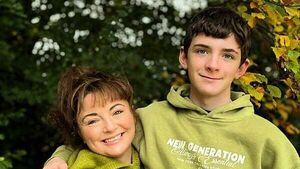People with incurable skin disease lack support, report finds

By Cillian Sherlock, PA
Serious gaps exist in the care of people with an incurable and painful skin disease, an independent report has found.
An examination of supports for the 300 people in Ireland living with epidermolysis bullosa (EB) revealed that home nursing services are affected by staff shortages, high turnover and limited training.
The rare condition, also known as Butterfly Skin, is caused by an absence of proteins between the skin layers, causing it to tear and blister at the slightest touch.
It requires painful bandaging to prevent infection, which in severe cases must be changed daily.
Patients living with the condition, and others caring for family members with EB, will outline their concerns about the shortfalls in care to TDs and Senators in Leinster House on Wednesday.
You’re punished in every single way
The EB Butterfly Review, commissioned by national charity Debra, found “serious systemic gaps” are limiting patients’ quality of life, and that access to essential wound care materials and medication is inconsistent.
Ireland lacks a national bandage scheme, which means those with less severe forms of EB often bear the financial burden.
Psychological and dental support are described as “severely lacking”, with financial and welfare supports “complex and exhausting”.
The Ernst & Young report recommends delivery of high-quality home nursing services, making it easier to apply for financial support and improving access to, and affordability of, medications and wound care.
Debra CEO Jimmy Fearon said there have been some positive developments in recent years and the charity has been working with the Government and HSE to secure ring-fenced, annual funding which would make “a world of difference” to the EB community.
“This could be used to build integrated and sustainable nursing care to alleviate some of the heavy burden of the lifelong condition and provide additional psychological support at St James’s Hospital to safeguard the mental health of EB patients,” he said.
One mother living with EB says the lack of coordinated care makes her feel invisible to the State.
“You’re punished in every single way,” said mother-of-one Amanda Nugent, 47, from Newbawn in Co Wexford.
“Because of my type of EB, I can’t access medical cards. I’m not entitled to long-term illness, to disability, yet I have one of the rarest conditions in the world.”
She is forced to borrow plasters and bandages from her 12-year-old son Ruaidhri, who also lives with EB simplex, along with over 20 relatives in her extended family.
Ms Nugent, who was diagnosed at age 37, says she grew up experiencing excruciating blisters, one the size of a duck egg, on her feet.
She was “absolutely devastated” when her son was also born with the condition.
“It is devastating too for my mental health because there is a feeling that I gave that to him,” she said.
Dubliner Liz Collins, whose daughter Claudia Scanlon lives with one of the most severe types of EB, said that every chapter of life brings new challenges, and dressings have to be carried out 365 days a year.
“It’s a horrible place to be, like being stuck in a hole you can’t get out of,” she said.
“Carers often feel like prisoners because the current level of care is fragmented, fragile, and not properly coordinated. A community care coordinator would go a long way to resolving that.”






